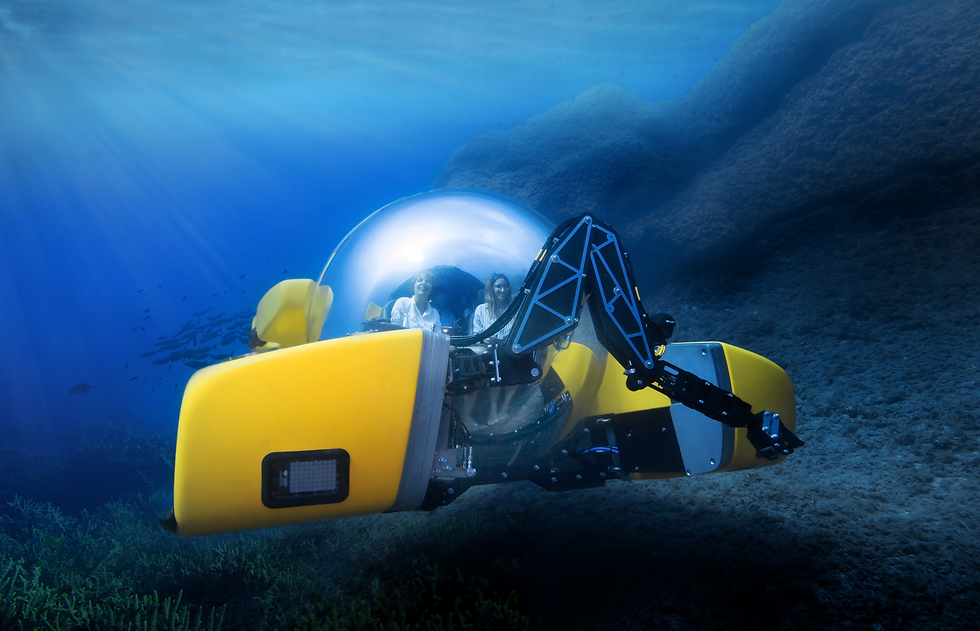Triton Submarines - Exploring New Frontiers & Opportunities
Recent years have seen ever-growing demand for unique experiences. No longer content with simply owning an item, people want to use it to its full potential. In the yachting sector, the yacht’s changing role from status symbol to adventure platform is demonstrated by the growing explorer, expedition and support yacht markets, all virtually non-existent 20-years ago.
For those wanting to truly explore the oceans, submersibles provide an incredible opportunity. Advances in battery- and acrylic-hull technology, etc. has made the deep ocean accessible like never before in human history. Florida-based Triton Submarines report an increasing number of Owners seeking to not only integrate submersibles into their yachting experiences, but into their philanthropic, legacy and personal achievement endeavors too. “All our Owners experience and achieve the extraordinary,” says Triton’s president, Patrick Lahey.
Lahey continues; “From serial Triton owners like OceanX, engaged in filming important documentaries like Blue Planet II and tagging sixgill sharks at depth; to Project REV, the world’s largest yacht dedicated to marine research; back to the first two models we delivered well over a decade ago that have dived from Antarctica to the Solomon Islands, recently filming Shark Week. Whenever a submersible owner is exploring, be it reefs, wrecks or below the ice, every dive below 40m will almost guarantee they are the first human to set eyes on whatever is being observed.”
For Craig Barnett, Triton’s Sales Director, the TRITON 1650/3LP (Low Profile) represents the perfect sub for a first-time buyer. “Weighing just 4,000kg and measuring only 180cm (5’ 9”) in height, this three-person Triton is light in weight but heavy on capabilities,” he states. “Its 500m depth capability means serious depths are within your reach, and from the comfort of leather sports seats in a climate-controlled environment you explore reefs and wrecks, or descend into the darkness and discover new species of marine life.”
For anybody new to submersibles, four primary concerns tend to come up. “Those considering a submersible for the first time invariably ask the same four questions,” shares Bruce Jones, Triton’s CEO. “What if; we don’t come back up, run out of oxygen, lose comms with the surface or feel claustrophobic?”
“However, almost everything about a submersible is counterintuitive,” Jones explains. “In addition to numerous independent ‘return to surface’ contingency systems, one has to remember a submersible’s natural proclivity is to float. Try pushing a basketball underwater, then imagine the displacement of a pressure hull. The challenge in design is actually making the submersible descend.”
Jones also explains that third-party classification rules, to which all Tritons are built, require four days of oxygen/life support in addition to their 10-12 hours of dive duration. As for communication, Triton cleverly utilizes the ‘old school’ proven tech of the underwater acoustic telephone developed in 1945 by the US Navy, allowing not only voice, data and text comms, but also underwater navigation with a chart plotter, just as one would with a center console on the surface.
In summary, “Certified submersibles, when you include tourist submarines, carry a million passengers a year, yet there has not been a single passenger fatality going back 40 years. Statistically, it is the safest form of transportation in the world today.”

Claustrophobia is rare among today’s submersible passengers - the near optically perfect acrylic used in Triton’s spherical pressure hulls almost completely disappears from view when submerged. “One is simply left with a sense of awe, taking in the panoramic expanse of the ocean,” adds Lahey. “People spend the first five minutes of a dive touching the acrylic to ensure it is still there, half expecting their hand to slide right into the water. Most have watched Blue Planet II, but few will realize some of that 4k UHD footage was shot from the interior through the acrylic of a TRITON 3300/3.”
For Owners looking to offset the $3,500,000 price tag for a TRITON 1650/3LP, the charter market is a sector where Barnett sees great opportunities. “The entertainment and travel sectors report how clients interpret luxury as ‘unique and meaningful experiences’, and what is more unique than engaging with the ocean in a submersible? Few of our current owners charter their units, but there is demand from a variety of sources; individuals, marine institutes, media production companies, commercial marine companies and the burgeoning UHNWI-curated-experience sector.”
“Daily charter rates with the clients that offer charter is in the region of $15,000-$25,000, however, consumables cost is roughly $25 for a full day’s diving - cheaper than a Waverunner!” adds Barnett.
Who could have guessed?!


